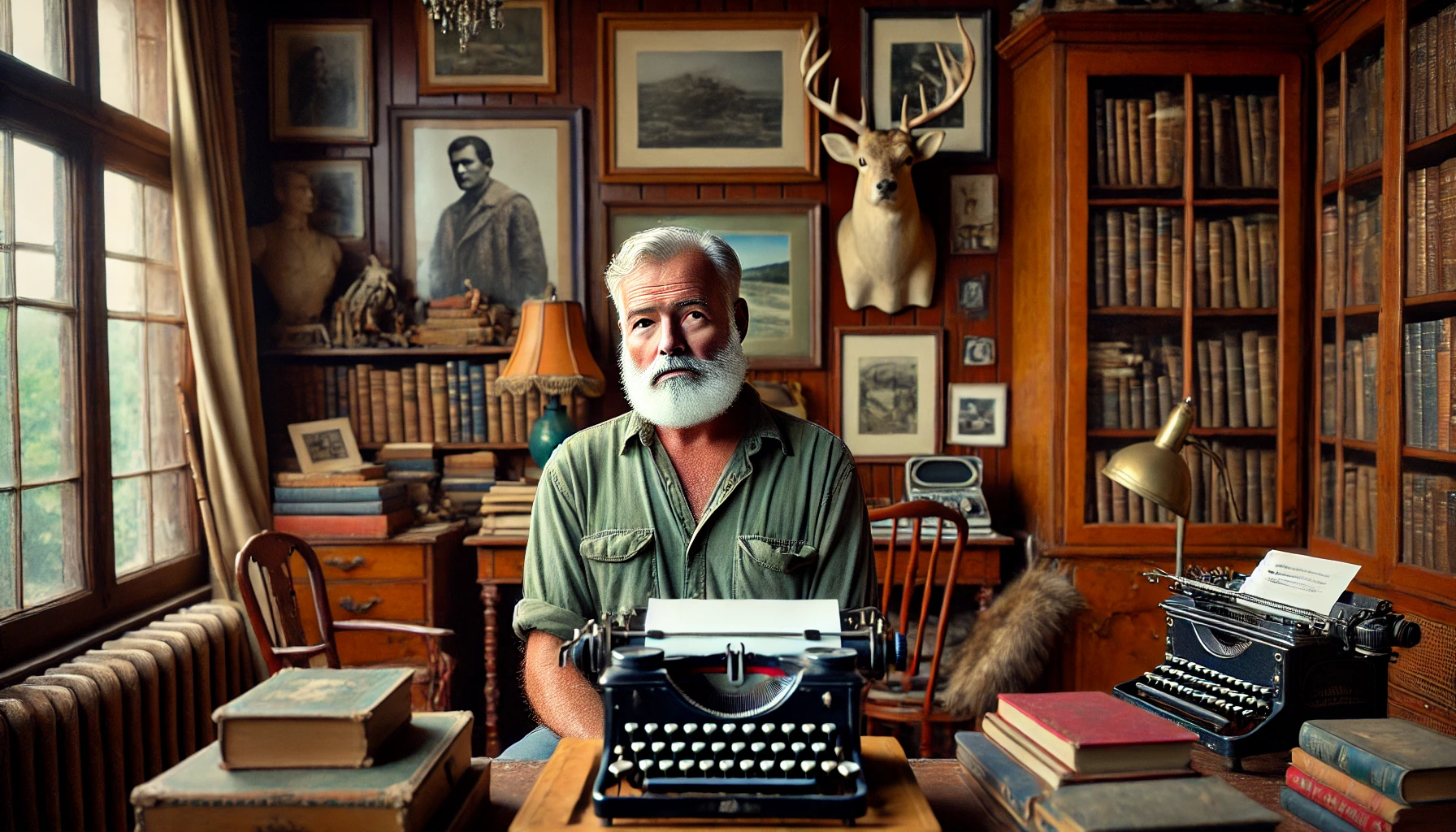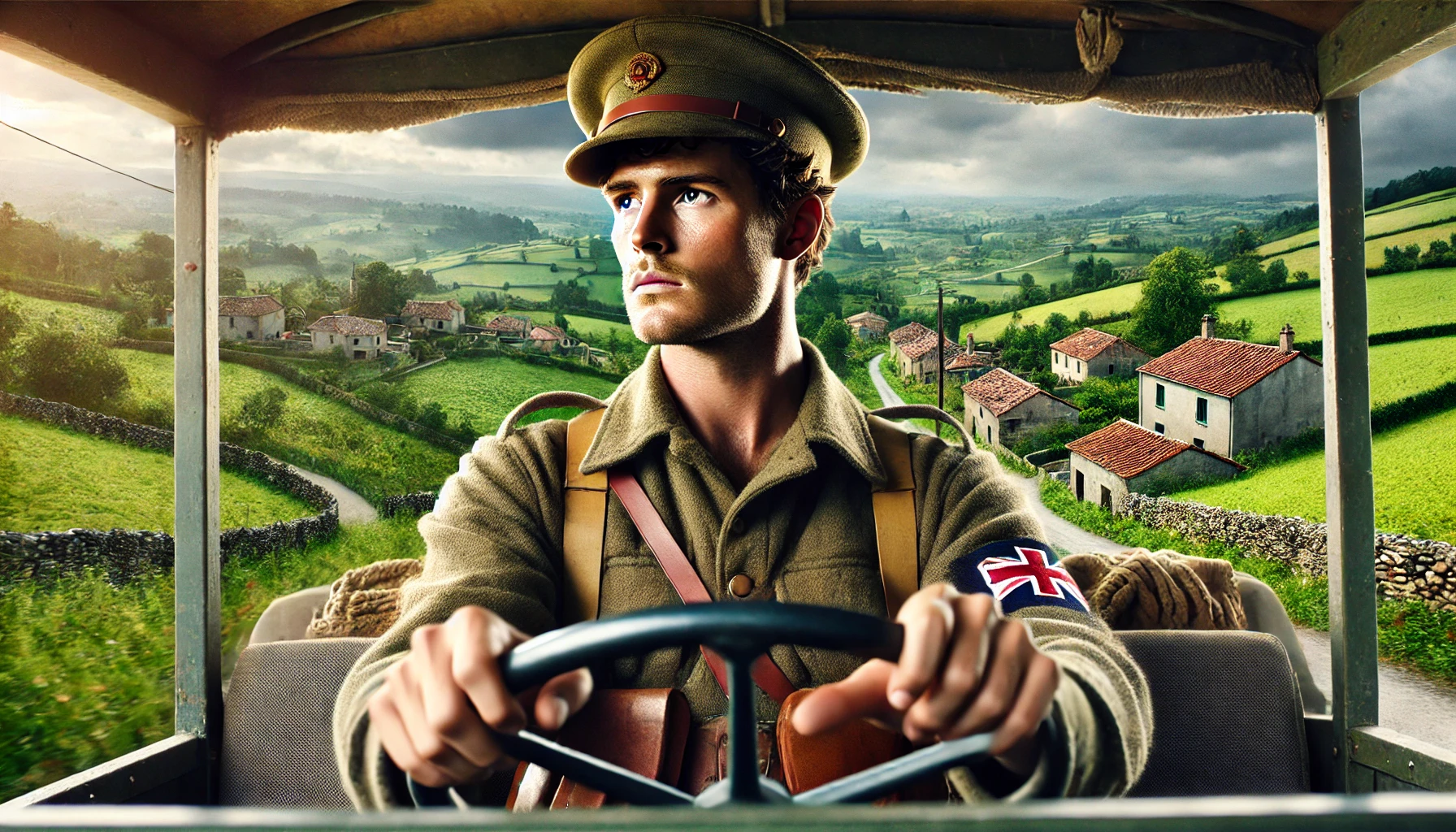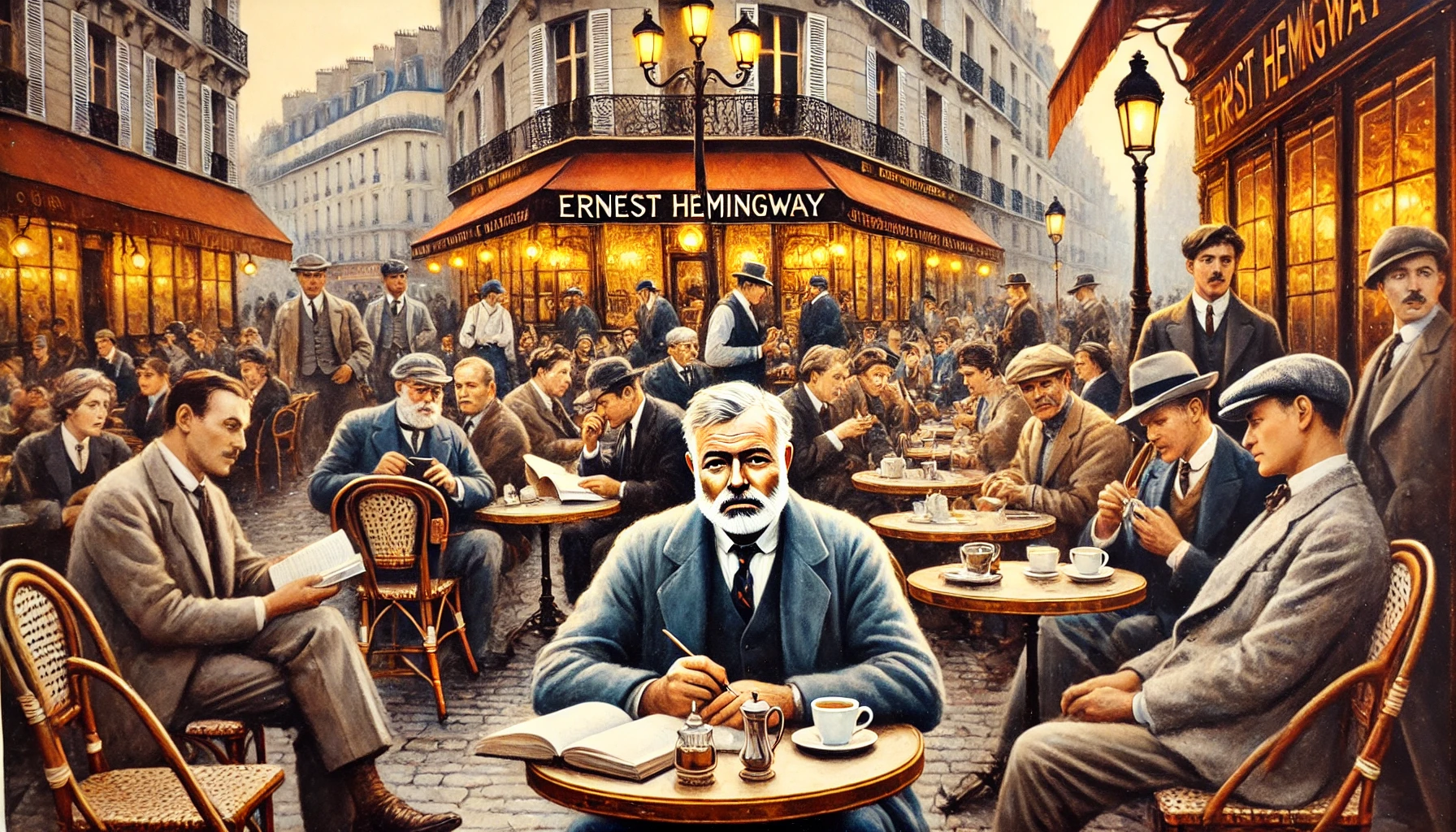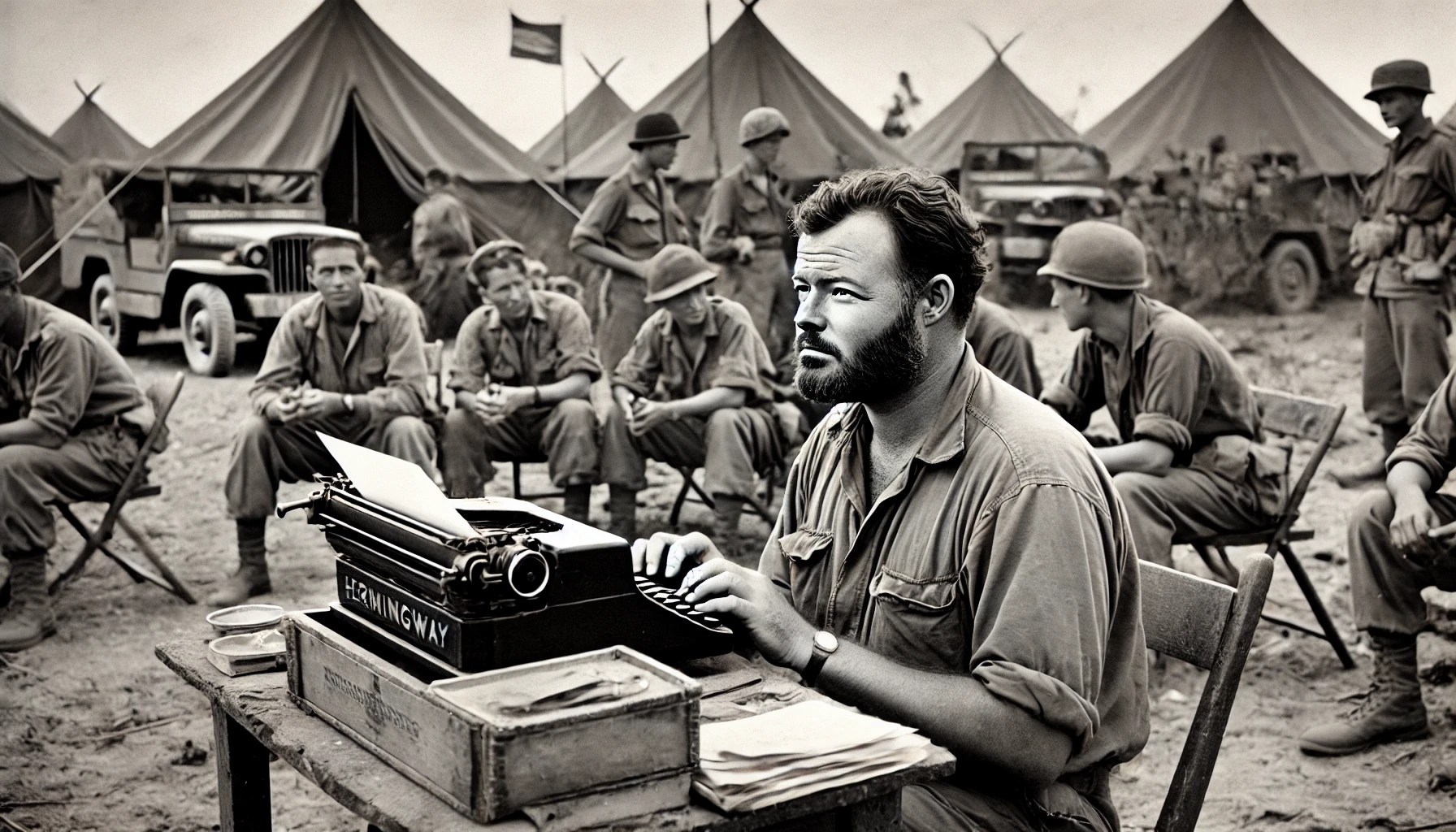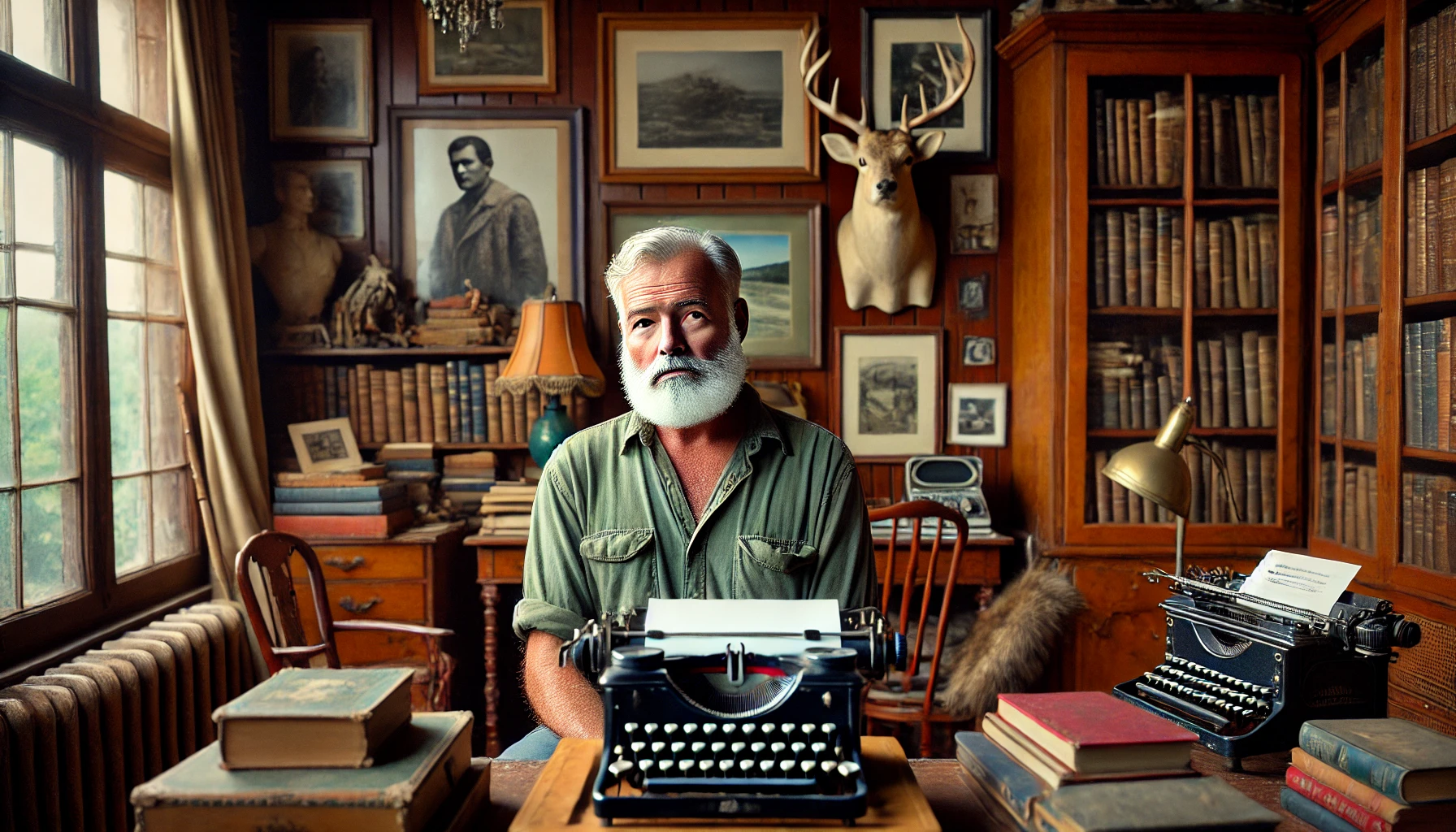Ernest Hemingway, the man, the myth, the writer with a life more hectic than a Mexican soap opera. Born on July 21, 1899 in Oak Park, Illinois, Hemingway was a literary giant who left an immortal legacy through his works. But behind his novels and short stories, there was a human being struggling with his own demons. This is a journey through Hemingway’s life, focusing on his personality, his emotions, and how his inner battles were reflected in his work. And of course, let’s give it a touch of humor and hope, because that’s the way it should be.
Early Years: The Adventure Begins
As a child, Ernest showed a penchant for adventure. His father, Clarence, was a doctor and taught him to hunt and fish, while his mother, Grace, instilled in him a love of music and art. Interesting combination, isn’t it? Imagine a young Ernest playing the violin after a day of hunting. But these happy years were not without their challenges. The strict Oak Park upbringing and the expectations of his parents put pressure on young Hemingway.
The Great War and Journalism
Hemingway decided to join World War I as an ambulance driver for the Red Cross, an experience that would change his life. He was severely wounded, and his recovery in an Italian hospital became the basis for his novel A Farewell to Arms. After the war, Hemingway worked as a journalist, traveling around Europe and covering important events. This journalistic career not only gave him material for his works, but also shaped his direct and concise style.
Paris and The Lost Generation
In the 1920s, Hemingway moved to Paris, where he joined the famous “Lost Generation” of American expatriates. During this period, he wrote Fiesta (or The Sun Also Rises), a work that captures the disenchanted spirit of the postwar period. Paris was not only where Hemingway honed his writing, but also where his problems with alcohol began to manifest themselves. He was often seen in cafés, drinking and arguing with other writers.
Love and Women in Hemingway’s Life
Hemingway was a man of passions, and his love affairs were no exception. He was married four times, and each of his wives left a mark on his life and work. From Hadley Richardson, his first wife, to Mary Welsh, his last companion, Hemingway found in his relationships both inspiration and torment. His turbulent love life reflected his own inner conflicts and his constant search for something that seemed always just out of reach.
World War II and the Nobel Prize
During World War II, Hemingway again became a correspondent, and his experiences at the front influenced works such as For Whom the Bell Tolls. In 1954, he received the Nobel Prize for Literature, a recognition of his ability to reflect the human condition through his prose. However, this achievement did not alleviate his internal struggles. His health problems, along with his increasing paranoia and depression, began to darken his later years.
The Battle with Mental Health
Hemingway suffered from depression, bipolar disorder, and alcoholism, problems that worsened over time. Despite his appearance as a strong and invincible man, Hemingway was constantly at war with himself. His traumatic experiences, his genetics (his father committed suicide, which also deeply affected Ernest), and his lifestyle contributed to his mental deterioration.
Hemingway’s Legacy
Ernest Hemingway’s legacy is undeniable. His works continue to be studied and admired for his ability to capture the essence of human life with a clarity and honesty rarely equaled. Books such as The Old Man and the Sea, A Farewell to Arms, and Fiesta are testaments to his literary genius. But beyond his books, Hemingway leaves us with an important lesson about fighting the stigma of mental health. His life reminds us that fame and success do not immunize us against inner demons, and that it is vital to seek help and support.
Works by Ernest Hemingway
- Fiesta (The Sun Also Rises) ( 1926)
- A Farewell to Arms ( 1929)
- For Whom the Bell Tolls ( 1940)
- The Old Man and the Sea ( 1952)
Note: The images used in this article are merely illustrative and were created with artificial intelligence.
Sources
- Baker, Carlos. Ernest Hemingway: A Life Story. Scribner, 1969.
- Mellow, James R. Hemingway: A Life Without Consequences. Houghton Mifflin, 1992.
- Reynolds, Michael. Hemingway: The Paris Years. Blackstone Publishing, 1999.
- Kert, Bernice. The Hemingway Women. W. W. Norton & Company, 1983.


